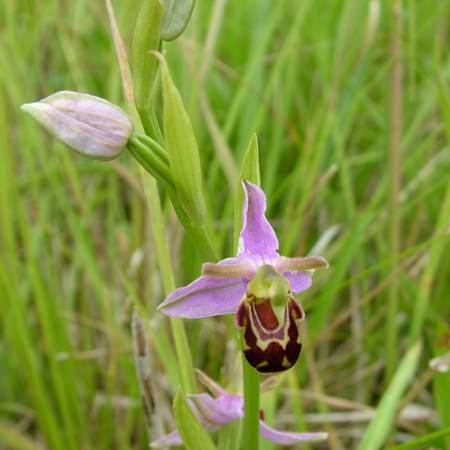Practical techniques: Plants – individual species
UK and Ireland
There are around 2230 species of wild, native, seed-bearing plants in the British Isles, as well as about 70 native species of ferns, 1000 bryophyte species, 1700 lichens, at least 20,000 fungi and 15,000 to 20,000 species of algae. Ireland is less diverse, with approximately 850 species of wild, native seed bearing plants, 80 species of fern, 940 bryophyte species, 3500 species of fungi and an estimated 3000 – 5000 species of algae. In comparison with continental Europe, the British and Irish vascular flora is not particularly rich. However, both Isles have a blend of north-west European, Lusitanian and Mediterranean elements and support some internationally important plant assemblages. The native plant species have been supplemented by large numbers of introduced species.
Protection and its implications
Of the many plant species listed under Annex IV of the Habitats Directive, nine occur in the UK (Brtitain) and three of these nine also occur in Ireland. These species are strictly protected, in each country where they occur, under the Regulations derived from the Habitats Directive. These same species, and a small number of bryophytes (4 in the UK (Britain) and 2 in Ireland), also require protection through the designation of Special Areas of Conservation as a result of their inclusion in Annex II of the Directive. Even outside designated sites, the habitats of species listed on Annex II of the Directive receive some protection under the regulations derived from the Environmental Liabilities Directive . All of these Annex II/IV species are rare and many of the known populations are included within designated sites. Therefore, they are unlikely to be found on many development sites. A licence from the approriate statutory body would be required to permit development activity affecting any of the species listed under Annex IV of the Directive.
In England, Wales and Scotland, there are also around 190 rare plant species (including lichens and fungi) listed under Schedule 8 of the Wildlife and Countryside Act 1981 (as amended); 95 rare or threatened plant species (including lichen and fungi) are listed under the Northern Ireland under the Wildlife (NI) Order 1985, as amended by the Wildlife and Natural Environment Act (NI) 2011; and 88 rare plant species (including lichens and fungi) are protected under the 1999 Flora Protection Order in the Republic of Ireland. These species are given strict protection against picking, destruction and sale. They are mostly very rare and usually only found on nature reserves and other designated sites. These plant species are therefore unlikely to occur on development sites. Agreement would need to be reached with the appropriate statutory agency for any development work that could affect these species. All other wild plants receive some protection under the Wildlife and Countryside Act 1981, the Wildlife (Northern Ireland) Order 1985 and the Wildlife Act 1976, as amended in 2000, although the owner or occupier, or persons authorised by them, is exempt from this law and so this protection usually has no implications on development sites.
In the UK, those listed as priority species should be considered by the local planning authorities when determining planning applications. There may also be further species identified as priorities for action at a local level in the local Biodiversity Action Plans or on local Priority Lists.
Whilst these species are not necessarily strictly protected by law they are protected through planning policy. Again, most of these species are rare and usually only found on designated sites.
Ecologists’ reports sometimes refer to other categories of plant status e.g. nationally rare, nationally scarce and locally rare. These categories do not necessarily mean that the plant species is protected. However, it is good practice to consider the protection of these species on development sites. Nationally scarce and locally rare species are occasionally encountered on development sites.

Mitigation techniques
In the unlikely event that a strictly protected plant species occurs within a development site, protecting the plants in situ is likely to be the only viable option. Translocation of individual plants or propagating their seeds may be considered as a last resort for other species and could be successful provided that considerable attention is given to creating a suitable receptor site and the plants are well cared for during establishment.
Timing of works
The timing of works affecting species of plants is likely to be dictated by the life cycle and the sensitivities of the species concerned will need to be determined on a case by case basis.
Further Reading
English Nature (1995). Habitat creation – a critical guide (English Nature Science No 21). English Nature, Peterborough.
Fossitt, J.A (2000). A Guide to Habitats in Ireland. The Heritage Council of Ireland Series
Natural England (2015) Plants: surveys and mitigation for development projects. https://www.gov.uk/guidance/protected-plants-protection-surveys-and-licences